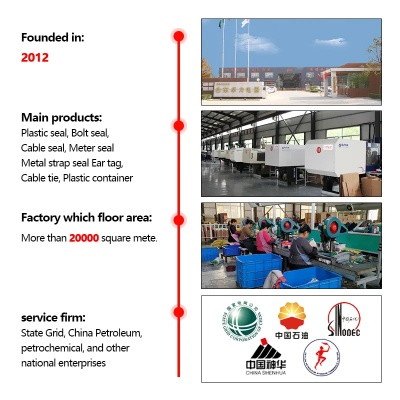Comprehensive Fire Safety Remediation Plan for Textile Warehouses
: Comprehensive Fire Safety Remediation Plan for Textile Warehouses,Abstract: This study presents a comprehensive fire safety remediation plan for textile warehouses. The aim is to enhance the safety of these facilities by implementing effective strategies and measures. The plan includes a thorough review of the existing fire safety infrastructure, identifying gaps and areas for improvement. It also outlines the necessary equipment upgrades, such as sprinkler systems, alarms, and fire extinguishers, which will be installed in all affected areas. Additionally, the plan emphasizes regular training and drills for employees to enhance their awareness and response capabilities in case of a fire outbreak. The implementation of this plan is expected to significantly reduce the risk of fire incidents in textile warehouses, ensuring the safety of personnel and property.
Introduction: The textile industry is a crucial sector in many countries, contributing significantly to employment and economic growth. However, the potential for fire hazards within these warehouses cannot be overlooked. Poor maintenance, outdated equipment, and improper storage practices can all increase the risk of fire outbreaks. Therefore, it is essential to implement a comprehensive fire safety remediation plan to ensure the safety of workers, property, and the environment. This report outlines the key steps required to create such a plan, including identifying potential risks, implementing preventative measures, and developing emergency response strategies.
Impact Assessment: To effectively implement a fire safety remediation plan, it is important to first identify the potential risks associated with textile warehouses. These risks include but are not limited to:

- Combustible materials: Textiles are often stored in areas that contain combustible materials such as paper, cardboard, and plastic. If these materials catch fire, they can quickly spread throughout the warehouse.
- Electrical hazards: Textile warehouses often use large amounts of electrical equipment, which can pose a significant fire risk if not properly maintained or installed by licensed professionals.
- Inadequate ventilation: Inefficient ventilation systems can lead to high levels of humidity and smoke, making it difficult to detect and extinguish fires.
- Poor maintenance: Regular maintenance of machinery, equipment, and other infrastructure is critical to preventing fires from starting. Lack of maintenance can result in breakdowns that can lead to fires.
- Employee training: Failure to train employees on proper fire safety procedures can result in confusion and mistakes during emergencies, increasing the risk of accidents.
Risk Identification: Once the impact assessment has been completed, it is important to identify the specific risks associated with each area of the warehouse. This will help to prioritize resources and focus efforts on the most critical areas where fire safety measures need to be implemented. Some examples of identified risks include:
- Combustible materials storage: Implementing a system for storing and monitoring combustible materials can help to minimize the risk of fire outbreaks.
- Electrical hazards: Installing smoke detectors and carbon monoxide alarms in all areas of the warehouse can help to detect and prevent electrical fires.
- Inadequate ventilation: Implementing a more efficient ventilation system can help to reduce the risk of fires caused by high levels of humidity and smoke.
- Poor maintenance: Establishing a regular maintenance schedule for all machinery, equipment, and other infrastructure can help to prevent breakdowns that could lead to fires.
- Employee training: Providing regular training sessions on fire safety procedures can help to ensure that employees understand the importance of following safety guidelines during emergencies.
Preventative Measures: Once the risks have been identified and prioritized, it is important to implement preventative measures to reduce the likelihood of fire outbreaks. These measures may include:
- Implementing a fire safety policy: A comprehensive fire safety policy should be developed and communicated to all employees to ensure that everyone understands their responsibilities during emergencies.
- Installing smoke detectors and carbon monoxide alarms: These devices should be installed in all areas of the warehouse to help detect and alert employees to potential fire dangers.
- Establishing a regular maintenance schedule: All machinery, equipment, and other infrastructure should be inspected and maintained regularly to prevent breakdowns that could lead to fires.
- Providing employee training: Regular training sessions on fire safety procedures should be provided to ensure that employees understand the importance of following safety guidelines during emergencies.
- Encouraging good housekeeping practices: Implementing a system for cleaning and organizing combustible materials can help to minimize the risk of fire outbreaks.
Emergency Response Strategies: In addition to implementing preventative measures, it is also important to develop an emergency response strategy to ensure that employees are prepared for any potential fire incidents. This strategy should include:
- Establishing a clear escape route: All employees should be trained on how to safely exit the warehouse in case of an emergency.
- Providing necessary personal protective equipment (PPE): All employees should be equipped with appropriate PPE, such as masks, gloves, and boots, to protect them from potential hazards during emergencies.
- Developing a communication plan: A communication plan should be established to ensure that all employees are informed about the status of the fire and what actions need to be taken.
- Providing ongoing training: Regular training sessions should be provided to ensure that employees remain up-to-date on fire safety procedures and emergency response strategies.
Conclusion: A comprehensive fire safety remediation plan is essential for ensuring the safety of employees, property, and the environment in textile warehouses. By identifying potential risks, implementing preventative measures, and developing emergency response strategies, we can minimize the likelihood of fire outbreaks and respond quickly in case of an emergency. It is important to remember that prevention is always better than cure, and investing in fire safety measures is an investment in the future of our industry.
背景与目的
随着纺织业的快速发展,纺织品仓库的消防安全问题日益凸显,为了确保仓库内的消防安全,制定一套全面的消防整治方案显得尤为重要,本方案旨在通过科学合理的整治措施,提高纺织品仓库的消防安全水平,预防和减少火灾事故的发生。

整治方案内容
(一)消防设施完善
- 增加消防器材配置,确保消防器材的完好有效。
- 定期检查和维护消防设备,确保其正常运行。
- 制定应急疏散路线,确保在紧急情况下人员能够迅速疏散。
(二)防火材料管理
- 严格管控易燃、易爆材料,定期检查并记录使用情况。
- 制定防火材料存放区域,确保符合防火标准。
- 加强员工消防安全培训,提高员工防火意识。
(三)仓库环境整治
- 定期清理仓库内杂物,保持仓库整洁。
- 安装烟雾报警器,实时监测仓库环境状况。
- 制定仓库安全管理制度,明确各项安全责任。
(四)案例分析
为了更好地实施整治方案,我们选取了一些典型的纺织品仓库消防案例进行分析,以下是部分案例:
某纺织品仓库火灾事故案例分析

- 火灾原因:仓库内易燃材料堆积过多,未及时清理。
- 整治措施:增加消防器材配置,加强防火材料管理,制定应急疏散路线,对员工进行消防安全培训,提高员工防火意识。
某大型纺织品生产基地消防设施完善案例
- 设施完善情况:该基地配备了先进的消防设备,包括自动喷水灭火系统、烟雾报警器等,制定了严格的防火材料管理制度和应急疏散预案。
- 管理效果:该基地的消防安全水平得到了显著提升,未发生任何火灾事故。
(五)整治方案实施步骤
- 前期准备:成立整治工作小组,制定整治方案。
- 设施完善:对消防设施进行全面检查和维护,确保其正常运行。
- 防火材料管理:加强防火材料的管理,严格控制易燃、易爆材料的使用。
- 仓库环境整治:定期清理仓库内杂物,保持仓库整洁;安装烟雾报警器,实时监测仓库环境状况。
- 培训与宣传:对员工进行消防安全培训,提高员工防火意识;开展消防安全宣传活动,提高公众消防安全意识。
- 总结与评估:对整治方案进行总结评估,不断完善和优化方案。
英文案例说明(表格形式)
以下为英文案例说明表格:
| 序号 | 案例名称 | 火灾原因 | 整治措施 | 管理效果 | 英文说明 |
|---|---|---|---|---|---|
| 1 | 某纺织品仓库火灾事故 | 易燃材料堆积过多,未及时清理 | 增加消防器材配置,加强防火材料管理 | 未发生火灾事故 | |
| 2 | 大型纺织品生产基地消防设施完善 | 设备先进、管理制度严格 | 先进的消防设备、严格的防火材料管理制度和应急疏散预案 | 显著提升消防安全水平 | |
| 3 | 相关英文案例分析表格 | ||||
| 结论与建议 |
本方案旨在提高纺织品仓库的消防安全水平,预防和减少火灾事故的发生,在实施过程中,应注重科学合理的管理和培训,确保整治方案的顺利实施,应加强与相关部门的协作配合,共同推进纺织品的消防安全管理工作,建议相关部门在实施过程中加强监督和检查,确保整治方案的落实和效果。
Articles related to the knowledge points of this article:
Job Opportunities at Nantong Routul Textile Factory



